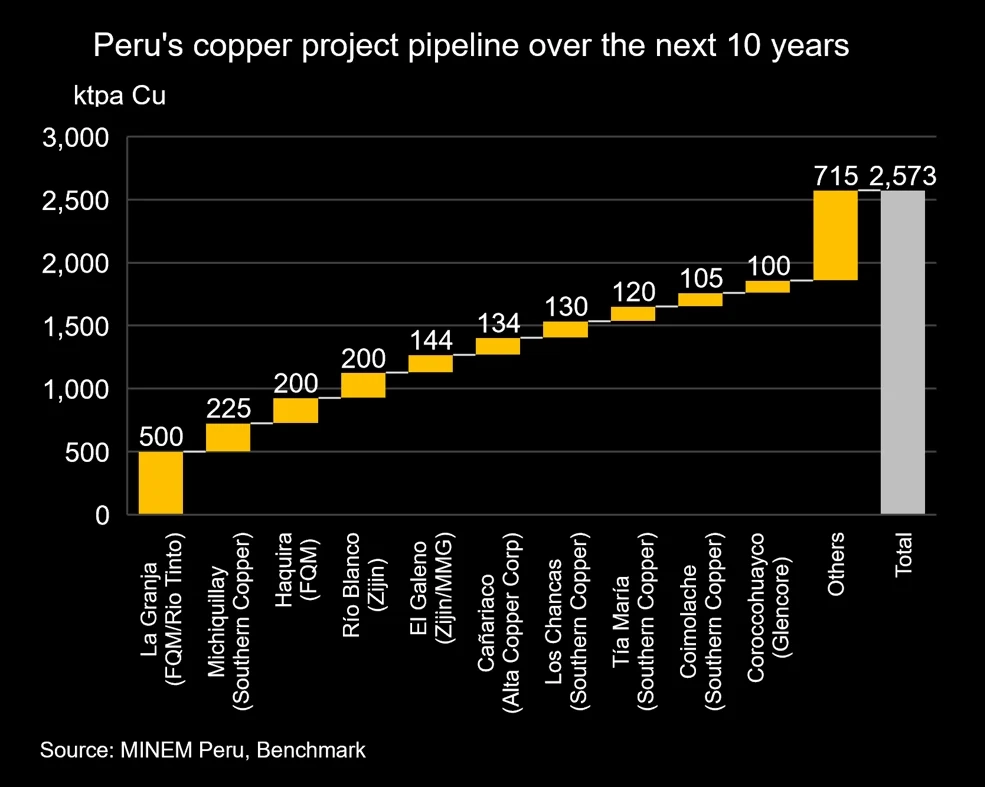Frik Els | August 28, 2024 | 2:00 pm Battery Metals Markets Latin America Copper

Tía María copper project in Peru’s Arequipa region. (Image courtesy of Southern Copper.)
In the outlook accompanying its annual results released this week, BHP (ASX: BHP) said longer term copper demand from the green energy transition could be such that shortages could become structural, creating an environment for a “fly-up pricing regime” in the latter part of the decade.

Some analysts put the copper need from global investment in electric grids, renewable energy and electric vehicles at as much as 12 million tonnes per year by the end of decade – double current levels. The scale up in supply is startling considering total global primary copper production in 2023 was estimated at 22 million tonnes.
Where that extra six million tonnes will come from is the subject of much debate, but it won’t happen without investment in Peruvian copper.
“Tia Maria, despite being one of the smaller projects in the pipeline, has become emblematic of the challenges posed by social resistance, with construction stopped midway in 2019.”
Peru was until last year the world’s second largest copper miner before it was overtaken by Congo (thanks in no small part to the ramp up to 600kt per year at Ivanhoe Mines’ Kamoa-Kakula).
Peru has been struggling to maintain output amid community protests, political turmoil and an unpredictable regulatory regime.
A new report by the copper service of Benchmark Mineral Intelligence cites an interview with energy and mining minister Romulo Mucho last week as a sign Peru’s copper industry is coming back on track.
Mucho, who took office in February, has been working hard to lure investors back to Peru and pointed to the Tia Maria project, which was revived by owners Southern Copper in June.
Mucho said construction of Tia Maria will signal to others it’s safe to recommit to mining in the country, including to backers of La Granja, which after Kamoa-Kakula would be the largest copper project to come on line in decades.

Peru’s copper production, which reached 2.75 million tonnes in 2023, is expected to stagnate during 2024 for the first time since 2020, according to Benchmark:
“Despite these challenges, Peru’s copper potential remains substantial, with 2.6Mtpa of potential capacity in advanced projects. However, social opposition continues to pose a significant barrier. Projects like FQM’s 200ktpa Haquira have struggled with noticeable community resistance for over a decade, impeding growth.
“On the other hand, Peru’s mining climate is gradually becoming more favourable, as evidenced by the recent approval of the 120ktpa Tia Maria project, signalling a shift towards a more pro-mining stance by the government.
“Tia Maria, despite being one of the smaller projects in the pipeline, has become emblematic of the challenges posed by social resistance, with construction stopped midway in 2019. Completion of this project can send a strong signal to other miners with projects in the country that Peru is again open for business.”
No comments:
Post a Comment